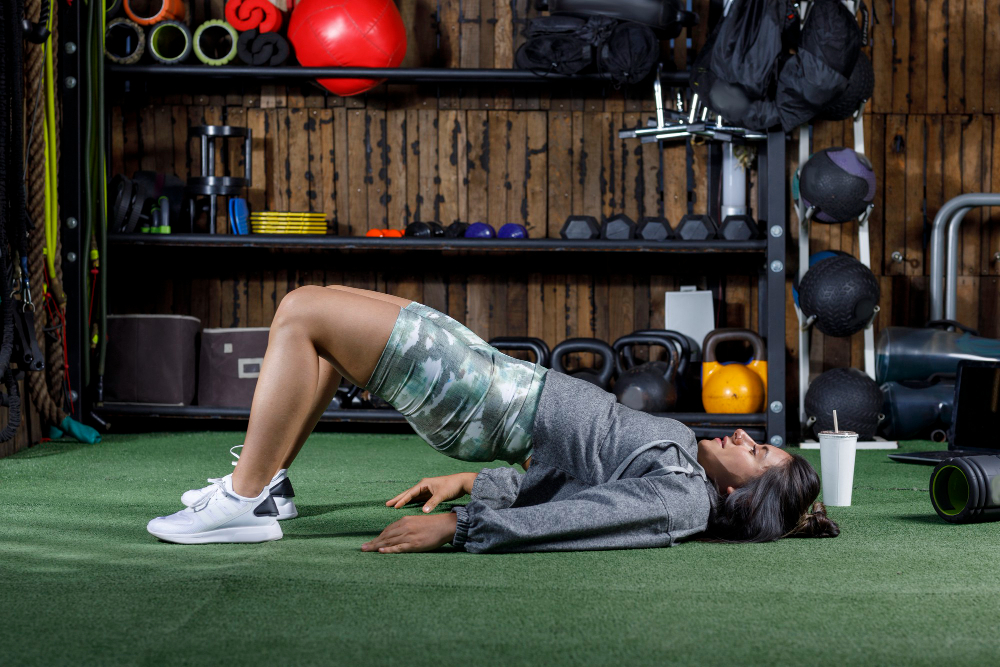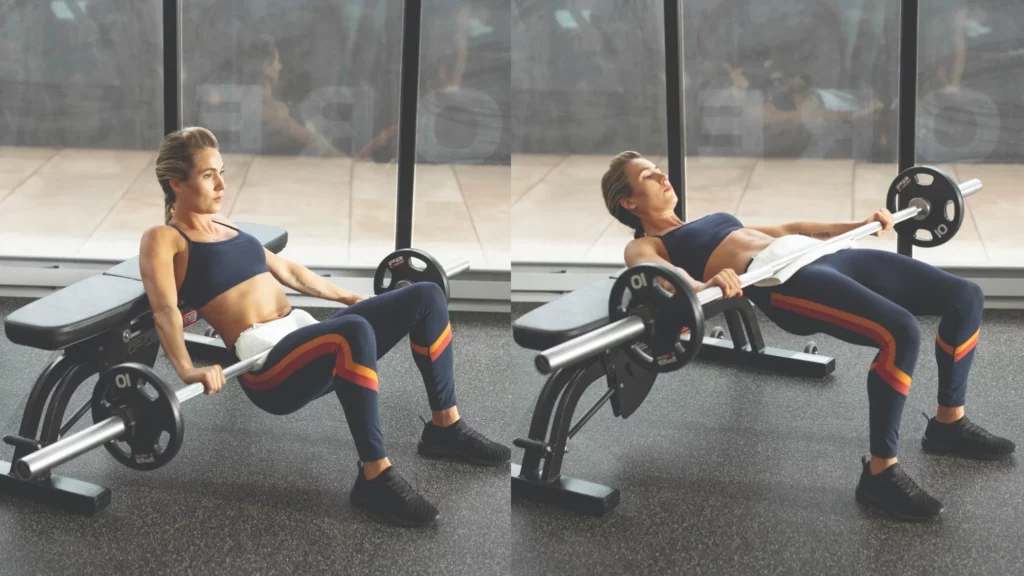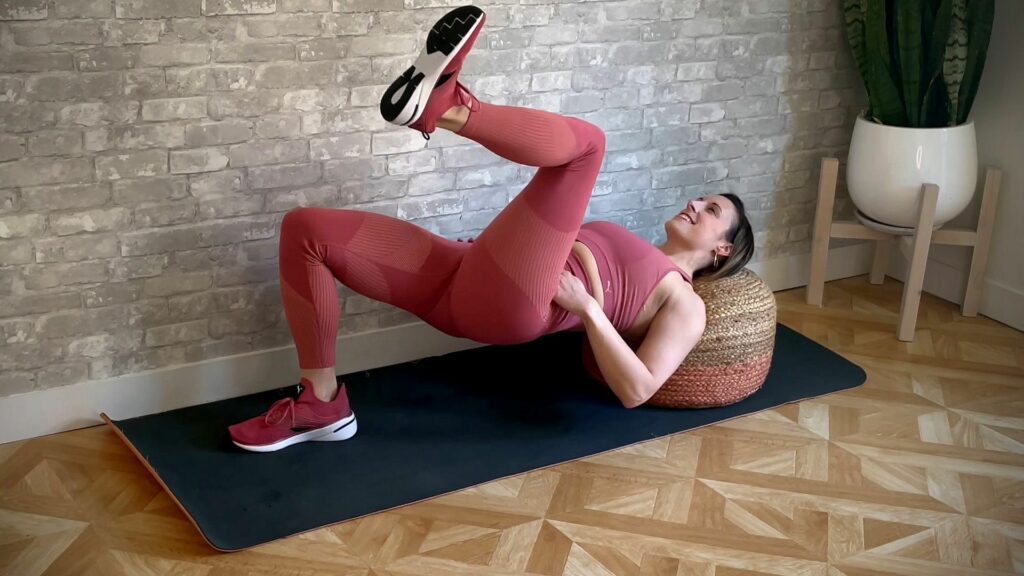The barbell hip thrust is a highly effective exercise for strengthening the glute muscles, a key component for improving athletic performance and enhancing overall lower-body strength. However, many individuals struggle to maximize their glute activation and see the results they desire from their workouts. This article provides a comprehensive guide on perfecting the barbell hip thrust, including essential warm-up techniques, step-by-step instructions, and variations that can enhance strength and growth.
By understanding the biomechanics of the hip thrust and incorporating effective warm-up strategies, you can significantly improve your performance and reduce the risk of injury. Whether you’re a beginner or an experienced lifter, this guide will help you unlock your glute potential and achieve your fitness goals.
In this article you will find:
Understanding the Science Behind Hip Thrusts
The hip thrust has emerged as one of the most effective exercises for activating and strengthening the glute muscles. This exercise specifically targets the gluteus maximus, which is the largest muscle in the human body, playing a crucial role in various movements such as walking, running, and jumping. Understanding the science behind hip thrusts can enhance your workout effectiveness and help you achieve your fitness goals.
The Anatomy of the Glutes
To appreciate how hip thrusts work, it’s essential to understand the anatomy of the glute muscles:
- Gluteus Maximus: The primary muscle targeted during hip thrusts, responsible for hip extension and external rotation.
- Gluteus Medius: Located on the outer surface of the pelvis, this muscle aids in hip stabilization and abduction.
- Gluteus Minimus: The smallest of the three gluteal muscles, it assists in hip movement and stabilization.
Hip thrusts engage these muscles effectively, particularly the gluteus maximus, by allowing for a greater range of motion and increased muscle activation compared to traditional exercises like squats or deadlifts.
Biomechanics of the Hip Thrust
The biomechanics of the hip thrust involve a unique movement pattern that maximizes glute activation:
- Hip Extension: As you lift your hips, the gluteus maximus contracts powerfully to extend the hips, a motion essential for athletic performance.
- Knee Flexion: While the knees remain bent during the lift, this position helps isolate the glutes and minimizes involvement from the quadriceps.
- Pelvic Positioning: Proper positioning of the pelvis during the thrust allows for optimal force production and muscle engagement.
Research has shown that hip thrusts can produce greater activation of the gluteus maximus compared to other lower-body exercises. A study published in the Journal of Strength and Conditioning Research found that hip thrusts lead to significantly higher levels of glute activation than squats, making them a vital addition to any lower-body workout routine.
Benefits of Hip Thrusts
Incorporating hip thrusts into your workout regimen offers numerous benefits:
- Enhanced Glute Strength: Improved strength in the glutes translates to better performance in sports and daily activities.
- Injury Prevention: Strong glutes help stabilize the pelvis and lower back, reducing the risk of injuries.
- Improved Posture: Strengthening the glutes can lead to better posture by promoting proper alignment of the spine and pelvis.
Furthermore, hip thrusts can contribute to aesthetic goals by enhancing the shape and size of the glutes, a priority for many fitness enthusiasts.
Conclusion
Understanding the science behind hip thrusts reveals their significance in activating and strengthening the glute muscles. By focusing on biomechanics and muscle engagement, hip thrusts stand out as a powerhouse exercise for anyone looking to unlock their glute potential. As you progress through your lower-body workouts, remember that incorporating this exercise will not only enhance your performance but also contribute to your overall strength and physique.
For further insights into the advantages of glute-focused exercises, consider visiting My Arsenal Strength for additional resources and guidance.
Essential Warm-Up Techniques for Optimal Glute Activation
Before diving into your lower-body workout, particularly exercises like the hip thrust, it’s crucial to prepare your body with effective warm-up techniques. A proper warm-up not only enhances performance but also reduces the risk of injury. For optimal glute activation, specific warm-up exercises are particularly beneficial.
The Importance of Warming Up
Warming up is essential for several reasons:
- Increased Blood Flow: Warming up elevates your heart rate, increasing blood flow to the muscles, which prepares them for more intense activity.
- Enhanced Muscle Elasticity: A good warm-up improves muscle flexibility and range of motion, allowing for more effective movements during your workout.
- Neuromuscular Activation: Warming up stimulates the nervous system, improving coordination and muscle activation, particularly in the glutes.
Dynamic Stretching for Glute Activation
Dynamic stretching is an excellent way to prepare your glutes for activity. Here are some effective dynamic stretches to include in your warm-up routine:
- Leg Swings: Stand on one leg and swing the opposite leg forward and backward. This movement warms up the hip flexors and glutes, promoting mobility.
- Walking Lunges: Step forward into a lunge, ensuring your knee stays behind your toes. This exercise engages the glutes and prepares them for more strenuous work.
- High Knees: Jog in place while lifting your knees towards your chest. This movement activates the hip flexors and glutes, increasing heart rate and blood flow.
Activation Exercises for the Glutes
Incorporating specific activation exercises into your warm-up can significantly enhance glute engagement during your workout. Consider adding these exercises:
- Glute Bridges: Lie on your back with your knees bent and feet flat on the floor. Lift your hips towards the ceiling, squeezing your glutes at the top. This exercise directly targets and activates the glutes.
- Clamshells: Lie on your side with your knees bent. Keeping your feet together, open your knees like a clamshell. This exercise engages the gluteus medius, promoting stability and strength.
- Fire Hydrants: On all fours, lift one leg to the side while keeping your knee bent. This movement targets the gluteus medius and helps prepare the glutes for more significant loads.
 Foam Rolling Techniques
Foam Rolling Techniques
In addition to dynamic stretching and activation exercises, foam rolling can help release tension in the muscles, improving performance:
- Glute Roll: Sit on the foam roller with one leg crossed over the opposite knee. Roll back and forth to release tension in the glute muscles.
- Hip Flexor Roll: Lie face down and place the foam roller under your hip flexors. Gently roll to alleviate tightness, allowing for better hip mobility.
Using a foam roller before your workout can enhance blood flow and muscle elasticity, further preparing your glutes for activation during exercises like hip thrusts.
Conclusion
By incorporating these essential warm-up techniques, you can optimize glute activation and enhance your overall performance during your workout. A well-structured warm-up routine not only prepares your muscles for the demands of your training but also sets the stage for effective and injury-free workouts. For more insights on glute activation strategies, visit My Arsenal Strength for additional resources and expert advice.
Step-by-Step Guide to Perfecting Your Barbell Hip Thrust
The barbell hip thrust is a powerful exercise designed to enhance glute strength and activation. Mastering the technique is crucial for maximizing benefits and minimizing the risk of injury. This step-by-step guide will walk you through the process of performing the barbell hip thrust correctly, ensuring you get the most out of this effective lower-body workout.
Step 1: Setting Up Your Equipment
To begin, gather the necessary equipment:
- Barbell: Choose a weight that is challenging yet manageable for your fitness level.
- Bench: Use a sturdy bench or platform that is approximately knee height to support your upper back.
- Weight Plates: If needed, add weight plates to the barbell for increased resistance.
- Mat or Padding: Use a mat or barbell pad to protect your hips from discomfort during the lift.
Step 2: Positioning Your Body
Once you have your equipment ready, follow these positioning steps:
- Find Your Spot: Sit on the floor with your upper back resting against the bench. Your shoulder blades should be positioned just above the edge of the bench.
- Feet Placement: Roll the barbell over your hips and position your feet flat on the floor, about shoulder-width apart. Your knees should be bent at approximately 90 degrees.
- Grip the Barbell: Ensure the barbell is centered over your hips. You can use an overhand grip to hold the barbell or let it rest on your hips.
Step 3: Executing the Hip Thrust
With your body positioned correctly, it’s time to perform the hip thrust:
- Engage Your Core: Before lifting, engage your core muscles to stabilize your spine.
- Lift Your Hips: Push through your heels, driving your hips upward. Squeeze your glutes at the top of the movement, ensuring your body forms a straight line from your shoulders to your knees.
- Hold and Lower: Pause at the top for a moment, then lower your hips back down to the starting position. Avoid dropping your hips too quickly to maintain control throughout the movement.
Step 4: Tips for Optimal Form
To maximize the effectiveness of your hip thrusts, keep these tips in mind:
- Focus on the Glutes: Concentrate on using your glutes to lift your hips rather than relying on your lower back.
- Maintain Neutral Spine: Keep your spine in a neutral position throughout the movement to prevent strain on your back.
- Breath Control: Exhale as you lift your hips and inhale as you lower them. This helps maintain core engagement.
Step 5: Incorporating Progressions
As you become more comfortable with the barbell hip thrust, consider incorporating progressions to further challenge your glutes:
- Single-Leg Hip Thrusts: Perform the hip thrust on one leg to increase difficulty and engage stabilizing muscles.
- Weighted Variations: Increase the weight of the barbell as your strength improves to continue challenging your glutes.
- Pause Reps: Add a pause at the top of the lift for 1-2 seconds to increase time under tension for your glutes.
By following these steps and focusing on proper form, you can perfect your barbell hip thrust technique and maximize glute activation. Remember that consistency is key, and as you continue to practice, you will see improvements in strength and muscle definition. For more expert tips on mastering your hip thrusts, check out Major Lutie for additional insights.
Incorporating Variations for Enhanced Strength and Growth
While the barbell hip thrust is a powerhouse exercise for building glute strength, incorporating variations can take your training to the next level. By modifying the basic hip thrust, you can target different muscle groups, increase the challenge, and promote further growth. This section explores various hip thrust variations that can enhance your strength and overall glute development.
1. Single-Leg Hip Thrust
The single-leg hip thrust is an excellent variation for improving balance and unilateral strength. This exercise emphasizes each glute individually, helping to correct imbalances and enhance overall stability.
- How to Perform: Start in the same position as the traditional hip thrust, but lift one leg off the ground, keeping it bent at the knee. Push through the heel of the grounded foot to lift your hips, squeezing your glutes at the top. Lower back down and repeat before switching sides.
- Benefits: This variation increases glute activation and engages the core for stability, making it a valuable addition to your routine.
2. Barbell Hip Thrust with Pause
Adding a pause at the top of the hip thrust can significantly increase time under tension, which is essential for muscle growth.
- How to Perform: Execute the hip thrust as normal, but hold the top position for 2-3 seconds before lowering your hips back down. Focus on squeezing your glutes during the pause.
- Benefits: This variation enhances muscle engagement and can lead to greater hypertrophy in the glutes over time.
3. Banded Hip Thrust
Using resistance bands can provide additional tension and activate the glutes more effectively throughout the movement.
- How to Perform: Place a resistance band just above your knees while performing the hip thrust. As you lift your hips, push your knees outward against the band to engage your glutes further.
- Benefits: The band adds resistance in a way that traditional weights cannot, leading to increased glute activation and stability.
 4. Elevated Hip Thrust
4. Elevated Hip Thrust
Elevating your feet or shoulders can increase the range of motion and the intensity of the hip thrust.
- How to Perform: Place your feet on a bench or platform while performing the hip thrust. Ensure your shoulders are still supported on the original bench.
- Benefits: This variation allows for a deeper stretch and contraction of the glutes, promoting greater strength gains.
5. Weighted Hip Thrusts with Chains
Incorporating chains into your hip thrusts can provide variable resistance, making the exercise more challenging as you lift your hips.
- How to Perform: Attach chains to either end of the barbell. As you lift, the weight increases due to the chains lifting off the ground, offering a progressive challenge.
- Benefits: This method maximizes strength gains by providing more resistance at the top of the movement when your glutes are fully engaged.
6. Deficit Hip Thrust
Performing hip thrusts from a deficit can help increase the range of motion, leading to greater glute activation.
- How to Perform: Stand on a platform or weight plate that is 1-2 inches high while performing the hip thrust. This allows for a deeper hip extension.
- Benefits: Increased range of motion can lead to improved strength and muscle growth in the glutes.
Conclusion
Incorporating these variations into your hip thrust routine can lead to enhanced strength and growth in your glute muscles. By challenging your body in different ways, you can continue to make progress and avoid plateaus in your training. For more insights into effective glute training and variations, check out My Arsenal Strength for expert advice and additional resources. The barbell hip thrust is an effective exercise for enhancing glute strength and activation, primarily targeting the gluteus maximus while also engaging the gluteus medius and minimus. To maximize benefits, it’s essential to master the technique through proper setup, body positioning, and execution. Incorporating dynamic warm-up exercises, activation movements, and foam rolling can further prepare your muscles for optimal performance.
To enhance your hip thrust routine, consider variations such as single-leg hip thrusts, banded hip thrusts, and elevated hip thrusts. These modifications not only increase the challenge but also promote balanced strength and growth in the glutes. Regularly integrating these variations will help you avoid plateaus and achieve better results in your lower-body workouts.


 Foam Rolling Techniques
Foam Rolling Techniques 4. Elevated Hip Thrust
4. Elevated Hip Thrust

